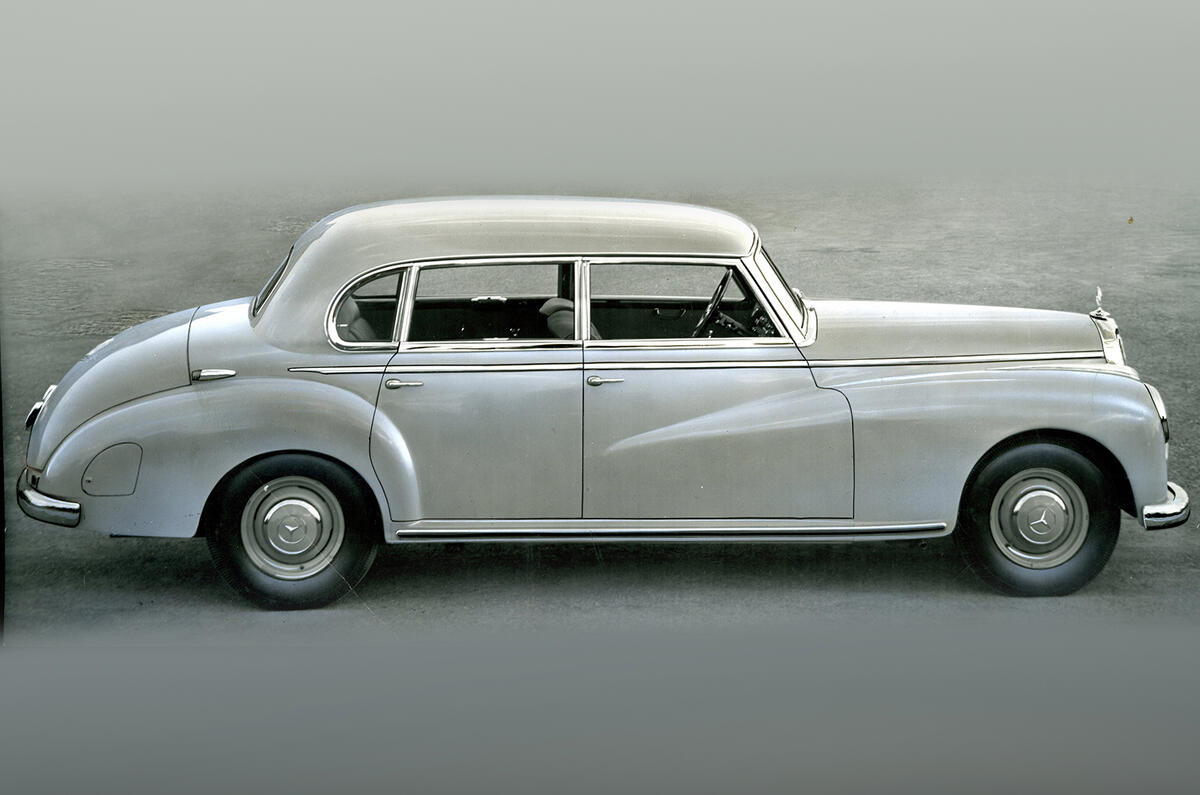Germany’s first international motor show was held in Berlin in 1897, and apart from interruptions forced by recession and global conflicts, it continued to host the event until 1951, when it switched to Frankfurt.
Held from 19-29 April, that year’s Frankfurt show was Germany’s first big post-war international car expo. It attracted 518 exhibitors, no fewer than 470 of them from West Germany.
Upon visiting the event, Autocar’s correspondent was taken aback by its size. “The recovery of the German motor industry is now dramatically demonstrated at the Frankfurt motor show,” he said. “For sheer size and elaborate presentation, it must be unique among international motor exhibitions.
“Exhibits occupy a park covering 17.5 acres, of which 10 acres are covered by the 14 exhibition halls, several of them new buildings erected since the war.
“The public crowded shoulder to shoulder in aisles and, on Sunday, roads leading into Frankfurt were jammed with a solid block of vehicles nearly 15 miles long heading for the show.”
Mercedes-Benz, Volkswagen, Ford and Auto Union had halls of their own in which 30 or 40 of their latest models were shown in elaborately staged displays. The Volkswagen exhibition hall was described as “a surrealist temple of the automobile” and included cars “riding over neon rainbows, a car revolving on a sloping mirror and a desert exhibit displaying the successful cars from the recent African rally”.
Two new cars from Mercedes-Benz, the Type 300 and Type 220, stole much of the limelight, although the return of BMW to car making was also notable.
BMW had been badly hit by the loss of its factories in East Germany and had been restricted to making motorcycles on the western side of the Iron Curtain. At Frankfurt, it wheeled out a prototype of its comeback model, the Type 501.
At this point, most of Germany’s car production was sold in the home market, and the requirements of the population had a strong influence on car design. “This accounts for the considerable interest in small economy cars which are cheap to buy and run, but the designers do not lose sight of the fact that they will be used on the great autobahnen, and even the smallest cars are usually designed to stand up to continuous full-throttle driving,” wrote Autocar.
The show emphasised the fact that Germany was rapidly rebuilding its manufacturing base, although some sombre reminders of the war remained.
“Industrial recovery in the western zone of Germany has been reinforced by recent figures of car exports to hard-currency markets and thriving new factories filled with busy, hard-working people, but it needed a visit to the Frankfurt motor show to bring home to many outsiders the background of destruction and dislocation against which the recovery process is still being carried on,” wrote Autocar.
“In Frankfurt, for example, whole districts have been abandoned, the streets blocked by rubble. This background throws into sharper contrast the new blocks of factories and offices and the steadily increasing numbers of shiny new cars on the road.”
Previous Throwback Thursdays
4 March 1899 - Steam, electric or combustion engine?
26 June 1906 - The first French Grand Prix
9 July 1907 - The beginning of Brooklands
14 February 1913 - 100 miles in one hour
8 April 1916 - Making post-war predictions
25 March 1922 - Caterpillar tracks are the future
4 July 1925 - Citroën lights up the Eiffel Tower
2 February 1934 - The ethics of skidding
6 July 1934 - A tour of Cowley
1 June 1935 - Introduction of the driving test
22 June 1945 - Driving through post-WW2 Europe
21 January 1949 - Tidier tails
25 August 1950 - The evolution of transmissions
24 April 1959 - Aston Martin enters Formula 1
27 January 1961 - Ford Thunderbird road test
17 November 1961 - TVR Grantura road test
10 September 1965 - The birth of modern Audi
19 August 1966 - Four-wheel drive on test
6 May 1971 - Driving Ford's Supervan
12 June 1976 - Cars for under £100
10 July 1976 - Land's End to John O'Groats on one tank
13 May 1978 - Ferrari 512 BB road test
19 January 1980 - Talbot Horizon road test
13 February 1982 - 4x4s tested on the farm
17 April 1985 - Secrets of a lost British supercar
4 September 1985 - Ford's electronic test bed
15 August 1990 - Giugiaro's vision of a 1990s Jaguar
28 April 1993 - BL's unseen concepts
16 March 1994 - Bentley's Concept Java
16 April 1997 - When Bugatti bit the dust
4 April 2001 - 0-260mph in 6.0 seconds
25 July 2001 - 180mph in a Chevrolet Corvette
Get the latest car news, reviews and galleries from Autocar direct to your inbox every week. Enter your email address below:




Join the debate
Add your comment
I love the "Adenauer" 300 too
Mercedes-Benz type 300